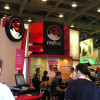Special Report: Are We There Yet?
When we last reported on the state of Linux, 17 months ago, there were several reasons the open-source operating system had yet to take its place as a core enterprise solution. Although it had made its way out of the underground, a lack of vendor support, scarce in-house skills, fainthearted management and weak administrative toolsets prevented Linux from taking that all-important leap from simple Web server to enterprise-application server, or even onto the desktop itself. Still, we said then that time was on Linux's side, and if it continued to evolve at its current pace, widespread adoption would be inevitable (see "The Linux Challenge"). We stand by that assessment.
Today, as then, if Linux is being snubbed by an enterprise, it's likely for cultural reasons. IT managers often equate open source with shareware and a lack of commercial support. Unless a manager has been involved in a successful Linux deployment, caution is the name of the game. Linux advocates at the bottom of the chain of command face an uphill battle to change this closed mind-set. The status quo, whether it's the reliability of Sun Microsystems Solaris hardware or an unwillingness to evaluate a system that is not based on Microsoft Windows NT/2000, is difficult to change -- even with the promise of increased ROI (return on investment), better performance and improved uptime. It's hard to teach an old dog new tricks. Another factor hurting Linux is market fragmentation -- there are upward of 150 distributions out there, though only a small fraction can be considered enterprise class (we tell you which ones fill that bill in "SuSE Queues Up for a Clean Sweep").






































































